Central ideas:
1 – The more unlikely the application field is, the more the inclusion of artificial intelligence (AI) will be effective. Cognizant investments? This is already happening in companies, such as Betterment and Weathfront, that include AI in the management of stock indices. This is how disruptive technologies work
2 -The union of 1 zillion streams of information intertwining, flowing back and forth is what we call the cloud. Software flows from the cloud to our cell phone in the form of a stream of updates.
3 – The immediate effect of books that are already born-digital is that they can flow to any screen, at any time. The book appears as soon as it is summoned. No need to buy or stock the book before reading it.
4 – Work of 60,000 person-years was devoted to the release of Fedora Linux 9, proving that self-organization and the dynamics of sharing can govern an enterprise of the scale of a city.
5 – In the next 30 years, holos will trend in the same direction as it has for the past three decades: holos will increasingly lean toward flowing, sharing, tracking, accessing, interacting, visualizing, remixing, filtering, cognifying, questioning, and becoming.
ABOUT THE AUTHOR:
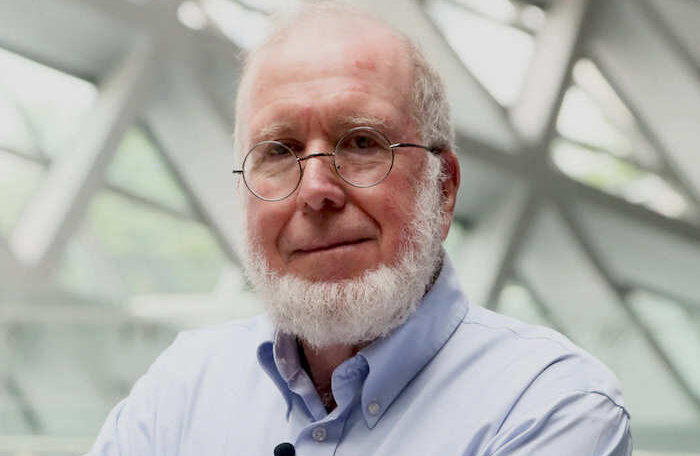
Kevin Kelly is cofounder of Wired magazine. He is a board member of the Long Now Foundation, a non-profit organization dedicated to shaping future vision for businesses. He has written several books, including Where Technology Takes Us.
Looking back now, we think that the computer age actually only began at that moment when equipment merged with the telephone. In isolation, computers were inadequate. All the lasting consequences of computing didn’t begin until the early 1980s, that moment when combined, the computer and the telephone intertwined to form a robust hybrid. Over the last thirty years, the economy based on this technology has had its ups and downs and seen its heroes come and go, but it is now quite clear that evolution has been guided by some broad trends. In this book, twelve trends are described, twelve forces of disruptive technologies that promise to shape our world in the next 30 years.
To name these trends, the noun is not the most appropriate way, because it means fixity, stability. Since they denote movement, the most appropriate way to name them is by using the verb form. For example, sharing is replaced by “share”, visualization by “visualize” and so on.
Chapter 1 – Becoming
The life of disruptive technologies in the future will be an endless series of upgrades. And the speed of these gradual progressions is increasing. Features change, patterns disappear, menus transform. You open an unused program every day, expecting to see certain options and find that entire menus have disappeared.
It doesn’t matter how long you have been using a particular tool: the endless upgrades transform you into an eternal novice, into a user that is usually seen as “clueless”. In the age of “becoming,” everyone becomes a newbie. Worse: we will be newbies forever.
Protopia is a state of becoming, not a destination. It is a process. In the protopian mode, things are (just a little) better. It is incremental improvement, a soft process. The “pro” in “protopic” derives from the notions of process and progress. This subtle advance is neither dramatic nor exciting. It is easy to miss it because protopia creates almost as many problems as it does benefits. Today’s problems were caused by yesterday’s technological successes, and technological solutions to today’s ills will cause tomorrow’s problems.
This circular expansion of problems and solutions conceals a steady accumulation of small net benefits over time. Since the Enlightenment and the invention of science, we have managed to create a little more than we destroy, year by year. This small positive percentage difference accumulates over the decades to make up what we call civilization. Its benefits, however, never gain the limelight.
Chapter 2 – Cognition
However, the first real Artificial Intelligence (AI) will not be born in a stand-alone supercomputer, but in the superorganism composed of 1 billion chips known as the Internet. Although planetary in size, it will be discrete, embedded, and freely connected. It will be hard to tell where AI’s thoughts will begin and where ours will end.
The cognification of photography has revolutionized the field because intelligence allows cameras to fit in anything (in sunglasses, on clothing, in pens) and have more performance, including calculating 3D, HD, and many other options that previously would only have been within the reach of those with a van stuffed with $100,000 worth of equipment.
The list of X’s is endless. The more unlikely the field of application, the more effective the inclusion of artificial intelligence will be. Cognizant investments? This is already happening in companies, such as Betterment or Weathfront, which include AI in the management of stock indices.
Areas that will be revolutionized by AI:
Cognified music. It can be created in real-time based on algorithms and used as a soundtrack to a video game or a virtual world.
Cognitive marketing. The amount of attention that a reader or viewer devotes to an ad can be multiplied by the social intelligence of that individual (number of his or her followers and the influence exerted on them).
Cognitive sports. Intelligent sensors and AI will be able to create new ways of scoring and refereeing sports games by monitoring and interpreting plays and subtle movements of athletes.
When Google acquired 13 other AI and robotics companies in addition to DeepMind, it was a big deal. At first glance, Google would just be beefing up its AI portfolio to improve search functionality, since search makes up 80% of the company’s revenue. However, instead of using AI to improve its search engines, Google is using search to improve its AI.
Database issue. When Kasparov, the chess champion, lost a historic match against IBM’s DeepMind computer, he realized that he could have played better. If he had the same immediate access to the huge database as his opponent, he would have a better chance of winning. From then on, Kasparov tried to combine man and machine to have more chances of winning, which motivated several disputes within this partnership. And this was the market’s reading for other sectors.
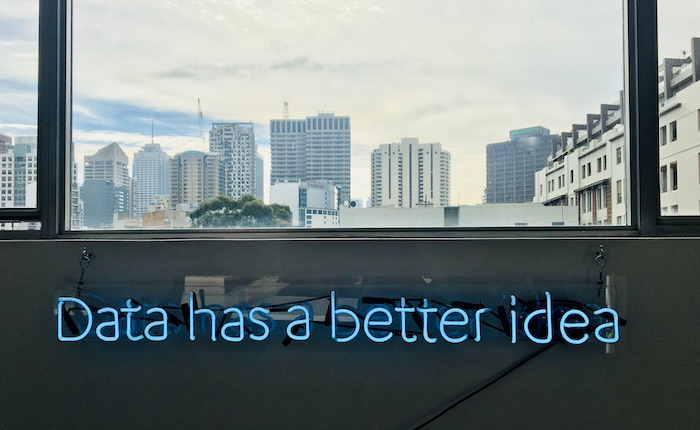
Chapter 3 – Flow
The digital economy operates on the free flow of the great river of copies. In fact, the digital communication network is designed to allow the copies to flow with as little friction as possible. They flow so freely that we could think of the Internet as a superconductor, in which a copy, once introduced, will continue to flow forever in the network, much like electricity does in a superconducting wire. This is the idea when something goes viral on the Internet. Copies are reproduced, and these duplicates go on, releasing new copies in an endless contagious wave.
The union of 1 zillion streams of information intertwining, flowing back and forth, is what we call the cloud. A piece of software flows from the cloud to our cell phone in the form of a stream of updates. The cloud is where your stream of text flows before it reaches the screen of your friend’s device. The cloud is where the parade of movies on your Netflix account rests until you decide to watch one of them
The cloud constitutes a reservoir from which your favorite songs escape. The cloud represents the new organizing metaphor for computers.
Chapter 4 – Visualizing
Besides reading words on a page, we now also read words floating non-linearly in the lyrics of a music video or scrolling through the end credits of a movie. We can read balloons with dialogues held by avatars in some virtual reality world, click on the subtitles of objects in a video game, or decipher the terms in an Internet diagram. It would be more appropriate to call this new activity “visualizing” rather than reading. Visualizing includes not only deciphering the text but also watching the words and reading the pictures. This activity has its own characteristics. The screens are always on. We never stop looking at them, unlike books. This new visual platform slowly merges words with moving images.
Digital Book. The immediate effect of books that are born digital is that they can flow onto any screen, at any time. The book appears as soon as it is summoned. There is no longer a need to buy or stock the book before reading it. A book is less an artifact and more a flow that crosses our field of vision. This liquidity applies to both the creation and the consumption of the book. Think of it, in all its stages, as a process, not as an object. It too ceases to be a noun and becomes a verb. A book constitutes something that is beyond paper or text. Something that is in full “becoming”: a continuous flow of thinking, writing, researching, editing, rewriting, sharing, cognizing, disaggregating, marketing, more sharing, and viewing.
Chapter 5 – Access
The absence of ownership as we see in Uber, Facebook, Alibaba, in practice extends to digital media as well. Netflix, the world’s largest video hub, allows you to watch a movie without having to buy it. Spotify, the largest music streaming provider, lets you listen to music where you don’t have to own it. Amazon’s Kindle Unlimited lets you read any title from a collection of 800,000 volumes without having to own any books.
Ownership no longer has the relevance it used to have. Access is more important than ever.
Prosumer. Access brings the consumer closer to the producer in such a way that, in effect, the consumer often gets to act as producer – becomes a “prosumer”, according to the definition coined by Alvin Toffler in 1980. If it is no longer necessary, for example, to own software to enjoy its improvements, we benefit from the possibility of access. However, access engages us to work for the software: as “prosumers,” we are encouraged to identify and report bugs (taking over the task of developing a customer Q&A list), to participate in user forums to resolve technical issues (reducing the expensive technical support area), and to develop our own add-ons and enhancements (replacing the researchers on the development team). Access extends customer interactions to all processes of the service.
Platform. It is the base founded by a certain company to house the construction of products and services created by other companies. It is neither a marketplace nor a company, but something new. A platform, like a department store, offers things that it did not create. One of the first successful platforms was Microsoft’s operating system. Anyone with technical ability and some ambition could develop and sell a program that ran on that system. And that is what many people did. Some programs, like the first spreadsheet software, Lotus 1-2-3, were so successful that they became mini-platforms. Highly interdependent products and services make up the “ecosystem” that is housed in a platform.
Chapter 6 – Sharing
Rather than seeing the new digital socialism as part of a zero-sum trade-off between free-market individualism and centralized authority, one can interpret technological sharing as a new political operating system that elevates the individual and the group at the same time. The goal, largely unarticulated but intuitively understood, is to maximize both the individual autonomy and the collective power of those who work collaboratively. In this way, digital sharing reveals itself to be a third way, capable of challenging the old dualism proposed by traditional knowledge.
State vs. the market. The notion of a third way is echoed by Yohai Benkler, author of The Wealth of Networks – How Social Production Transforms Markets and Freedom, a scholar who has pondered extensively on network politics: “I consider the emergence of social production and peer production to be an alternative to both the state-based proprietary system and the market-based proprietary system.
So far, the biggest online collaboration initiatives are open source projects. The largest of these, such as Apache, manage several hundred contributors, almost an entire village. One study estimates that the work of 60,000 person-years was devoted to the release of Fedora Linux 9, proving that self-organization and the dynamics of sharing can govern an enterprise of the scale of a city.

Chapter 7 – Filtering
The vastness of the Library of Everything quickly buries our consumption habits. We will need help navigating this vast uncharted territory. Life is short and we have too many books to read. Someone, or something, needs to make choices and whisper them in our ear to help us make decisions. Our only option is to seek help to choose. All kinds of filtering are used to sift through the bewildering volume of options. Many of these traditional filters are still very useful:
Guardian filter – authorities, parents, priests, and teachers protect us from the bad quality and pass on the “good stuff” to us.
Filter of the cultural environment – according to the expectations of the family, the school, and the society around them, children may receive different messages, learn different content, and be presented with different choices.
Other filters – filter of intermediaries, curators, government, friends, etc.
The genius behind the huge success of Google, Facebook, and other internet platforms was to build a gigantic infrastructure capable of filtering out this commoditized attention. The platforms use enormous computing power to bring the ever-widening universe of advertisers closer to the ever-widening universe of consumers. Their artificial intelligence seek out the ideal ad at the right time, in the right place, and at the appropriate frequency to elicit the best possible reaction. This is sometimes called personalized advertising, but it is actually something much more complete than targeting ads to individual consumers. The concept is made up of an ecosystem of filtering, with consequences that go beyond advertising.
More filtering will be inevitable because we cannot stop doing new things. Among these things will emerge in the near future unprecedented capabilities for filtering and personalization – ways of making us increasingly ourselves.
Chapter 8 – Remix
Paul Romer, an economist at New York University who specializes in economic growth, says that truly sustainable development comes not from new resources, but from rearranging existing resources to increase their value. In other words, growth comes from remixing. For his part, Brian Arthur, an economist at the Santa Fe Institute in New Mexico, says that all new technologies result from a combination of existing technologies. Modern technologies, thus, are born from the rearrangement and remixing of earlier primitive technologies.
The supreme fungibility of digital bits. This enables forms to transform easily, undergoing processes of mutation and hybridization. The rapid flow of bits allows one program to emulate another. Simulating some other forms is a native function of digital media. There is no escaping this multiplicity. The number of media options will only increase. The variety of genres and subgenres will continue to multiply rapidly. It is quite true that some will become popular while others will decline, but few will disappear completely. The world will always have opera fans, even a century from now. It will also have a billion video game fanatics and a hundred million virtual reality worlds.
The holy grail of the future visual language is findability – the ability, just as Google scans the web, to search through the collection of all movies and search in its depths for specific content.
The idea is to make it possible for you to type in keywords, or simply say “bike plus dog,” to access scenes from movies featuring a bike and a dog. In 30 years’ time, the most important cultural works and the most effective media will be those that are remixed the most.
Chapter 9 – Interact
Two elements drive the current rapid advancement of VR (Virtual Reality): presence and interaction. “Presence” is the commodity that VR sells. All historical trends in film technology turn to ever-increasing realism including sound, color, 3D display, and ever faster and more fluid projection speeds. Currently, all of these trends are being accelerated in the area of virtual reality.
The second generation of VR technology uses an innovative “light field” projection. (The first commercial light field units are Microsoft’s Hololens and Google-funded Magic Leap.) The virtual world is projected onto a semi-transparent display, much like a hologram. This enables the projected “reality” to overlay the scene that we would normally see without the special glasses.
Three platforms. The first technology platform to destabilize society in the course of just one human generation was personal computers. Cell phones were the foundation of the second platform, revolutionizing everything in just a few decades. The next platform, which is emerging now, is the virtual world.

Chapter 10 – Tracking
Ever-smaller chips, better batteries, and connectivity and cloud have encouraged some self-quantifiers to try very long-term monitoring. Especially of their own health. Most people have the privilege of making an annual appointment with a doctor to measure some aspect of their health. But imagine what it would be like if invisible sensors measured and recorded every day, all day long, our heart rate, blood pressure, temperature, glucose, and so on. We would have hundreds of thousands of pieces of information for each of these factors, under whatever conditions we were subjected to. With long-term self-quantification, however, you get a much more useful metric, since it mirrors a personal and unique reference, vital for diagnosis.
Cloud and monitoring. The design of the Internet of Things and the nature of the cloud, in which it floats, are founded on data monitoring. The 34 billion Internet-enabled devices to be included in the cloud over the next five years are designed to transmit data. And the cloud was born to store data. Anything monitorable that touches the cloud is sure to be tracked.
Big Brother. It is surprisingly easy to imagine all the power that would be concentrated in the hands of an entity capable of integrating all these streams (smart home, city cameras, utilities, commercial and private spaces, etc.). The fear of Big Brother stems directly from the technical ease of gathering such data. For now, however, most of these streams are independent. Their bits are not integrated and correlated. Some types of data do admit integration (credit cards and media usage, for example), but in general, there is no aggregated Big Brother-like stream yet.
Chapter 11 – Questioning
When we have proof that a concept like Wikipedia works, when it becomes obvious that open source software outperforms refined proprietary programs, when we are certain that sharing photos and other data is more advantageous than keeping them safely in a drawer, all the knowledge accumulated by these premises becomes the basis for an even more radical embrace of the principle of the common good. What once seemed impossible is now accepted without question.
Volume of data: questioning. The frenetic spinning of disruptive technologies has launched us to a new level, unveiling a continent of unknown opportunities and, also, of reckless choices. We have no way of predicting the consequences of interactions on a global scale. The volume of data and power required is inhuman. No doubt our collective behavior will be different from our individual behavior, but we do not yet know-how. And, much more importantly, our behavior as individuals will be different within the collective. If we don’t know, we ask. We need to decipher the new sphinx.
The best questions are not the ones that lead to answers, since answers tend to become more and more abundant. And what would be a good question?
The good question is not interested in a correct answer.
The good question cannot be answered immediately.
The good question challenges the existing answers.
The good question is one that you can’t wait for to be answered, but which had never caught your attention before it was formulated.
The good question is the seed of innovation in science, technology, art, politics, and business.
The good question, even when silly or obvious, hovers on the border between the known and the unknown.
Chapter 12 – Getting Started
The beginning is now, right now, right on the verge of such discontinuity. In the new regime, old cultural forces such as centralized authority and uniformity come into decay, while new cultural forces such as those described in this book – sharing, access, tracking – come to dominate institutions and personal life. As the new phase crystallizes, these forces will continue to intensify. Sharing, while it may seem excessive to some people today, is only just beginning. The transition from ownership to access has barely begun. Streams and streams are still just fillets
Age of transition. It may seem that we already track things too much, but we will be tracking a thousand times more in the coming decades. Each of these functions will be accelerated by high-end thingification, which is still nascent, but will make the smartest things produced today look crude in the future. None of this is final or definitive. These transitions are but the first step in a process, a process of becoming. A Beginning.
Over the next 30 years, the holos [total configuration] will trend in the same direction as it has for the past three decades: the holos are leaning toward, increasingly, flowing, sharing, tracking, accessing, interacting, visualizing, remixing, filtering, cognifying, questioning and becoming. We are, at this very moment, beginning all of this. The Beginning, of course, is just beginning.
Review: Rogério H. Jönck
Images: Reproduction and Unsplash
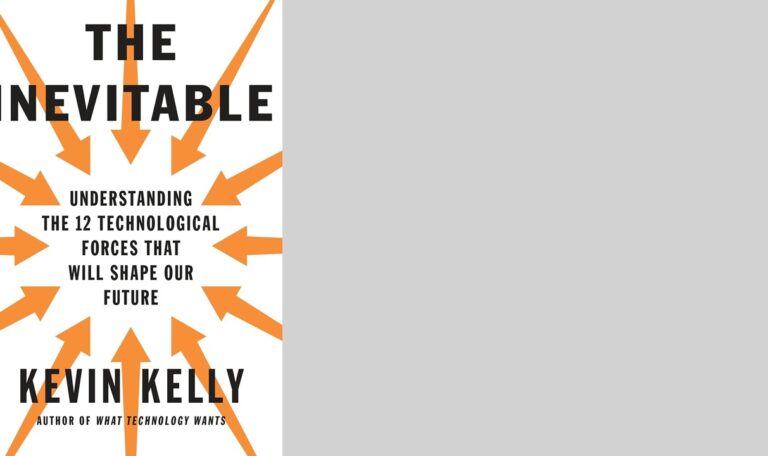
FACTSHEET:
Original Title: The Inevitable: Understanding The 12 Technological Forces That Will Shape OurFuture
Author: Kevin Kelly
![[Experience Club] US [Experience Club] US](https://experienceclubus.com/wp-content/uploads/2021/03/laksdh.png)






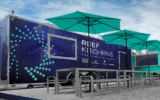



![[Experience Club] US [Experience Club] US](https://experienceclubus.com/wp-content/uploads/2021/03/logos_EXP_US-3.png)


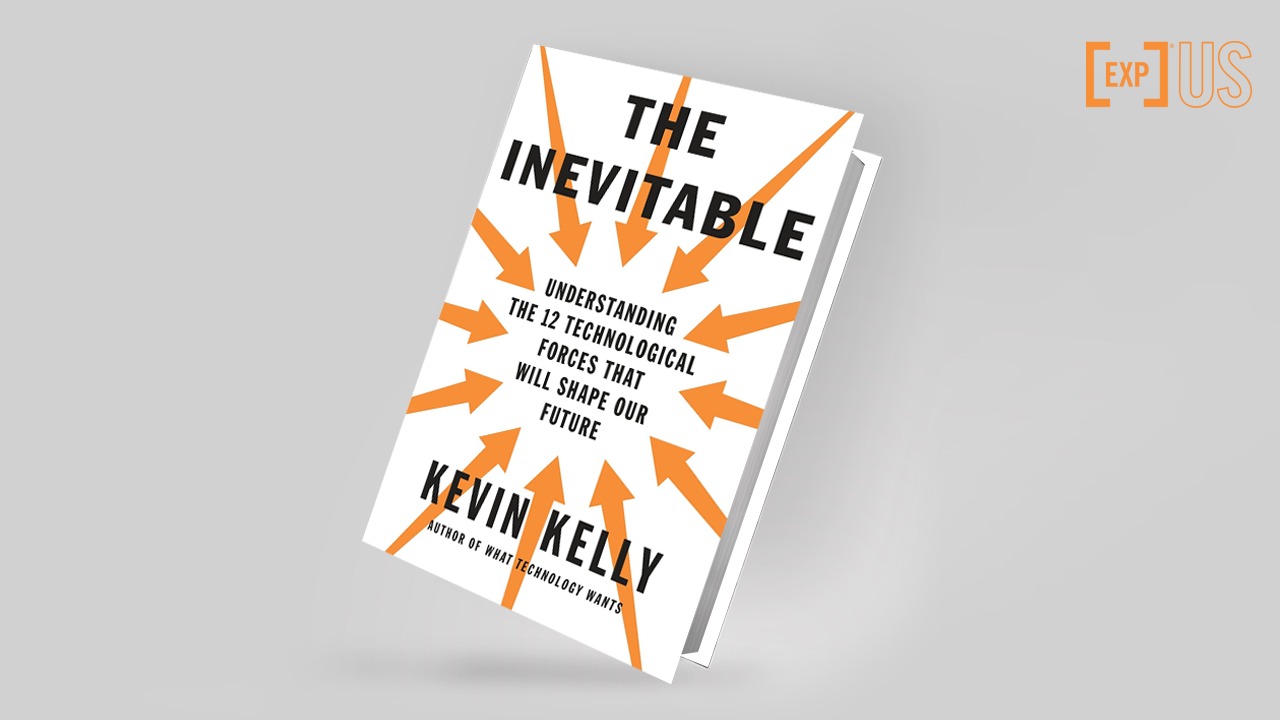

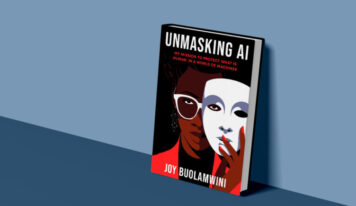
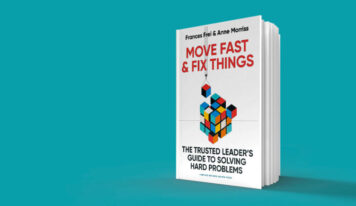
![[EXP no SXSW 2024] Rohit Bhargava: como o pensamento não-óbvio pode melhorar o mundo](https://experienceclubus.com/wp-content/uploads/2024/03/rohit-356x206.jpg)
